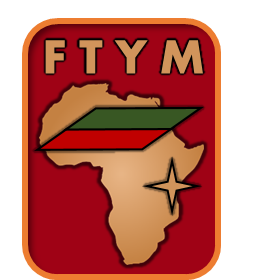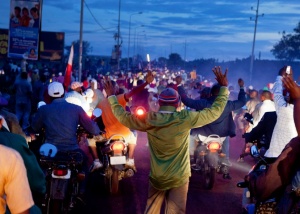Difference between revisions of "Free Tanga Youth Movement"
Hunt.james (talk | contribs) m |
|||
| Line 1: | Line 1: | ||
| − | <div style="font-size:0.9em; color:#333; margin-bottom:1.5em;"> | + | <div style="font-size:0.9em; color:#333; margin-bottom:1.5em;" id="mw-breadcrumbs"> |
[[Africa|DATE Africa]] > [[DATE Africa Non-State Threat Actors and Conditions|Non-State Threat Actors and Conditions]] > '''{{PAGENAME}}''' ←You are here | [[Africa|DATE Africa]] > [[DATE Africa Non-State Threat Actors and Conditions|Non-State Threat Actors and Conditions]] > '''{{PAGENAME}}''' ←You are here | ||
</div> | </div> | ||
| Line 16: | Line 16: | ||
| − | |||
[[Category:DATE]] | [[Category:DATE]] | ||
[[Category:Africa]] | [[Category:Africa]] | ||
Latest revision as of 20:04, 2 July 2020
In 2004, The Kujengan assembly declared emphatically on the floor on the United Nations that the disputed region would remain within the borders and control of Kujenga. This is largely due to the significant mineral deposits in the mountains and foothills of the area. Kujenga also seeks to prevent Amari acquisition of the port facilities in Tanga and hydro power facilities in Pangani. There has also been foreign natural gas exploration off the Tangan coast.
Alleged excesses by elements of the Kujengan Security Corps in Tanga led to the “Dark Summer” of violent protests which were quashed by a brutal crackdown and curfews in almost all parts of the region. A surprisingly well-organized resistance movement arose and grew into what is known today as the FTYM. Rumors persist of Amari involvement and even covert support of the insurgents.
The FTYM has claimed responsibility for numerous small attacks against government personnel and facilities in within Tanga and as far as Dar es Salaam. FTYM elements have been blamed for attacks on both regional and international peacekeepers. Low-level ambushes with small arms and improvised devices enabled more coordinated attacks with several company-sized elements.
FTYM attacks are mostly focused on Kujengan government and Kujengan sympathizers within the Tanga region. High-impact operations against public targets are almost always exploited for information warfare purposes. FTYM have maintained international awareness through their social media presences. Several Kujengan state websites and overseas commercial interests have been defaced, although the FTYM is not known to have an offensive cyber capability.
FTYM forces have also temporarily blocked roads and seized port facilities to emphasize their cause. In 2008, such a demonstration closed the main rail line from the port and brought international condemnation of Kujengan actions regarding the Tangans. On rare occasions, Kujengan “spies” have been executed and their bodies left hanging in public areas. The FTYM can be extremely volatile and will be hostile to anyone they perceive as supporting Kujengan interest over theirs.

